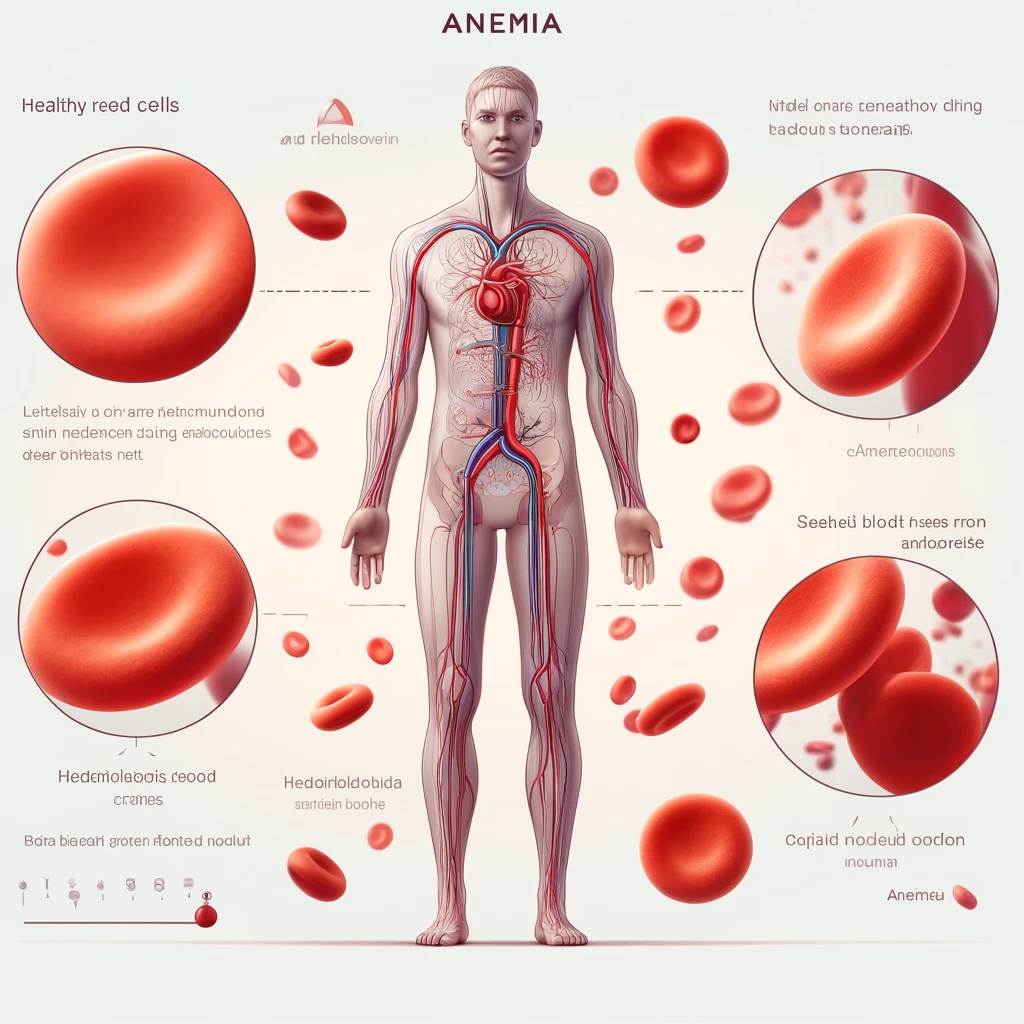Anemia is a common condition that can affect people of all ages. Detecting anemia early is crucial for effective treatment. In this article, we'll explore which tests detect anemia, how they're performed, and what the results mean.
Introduction to Anemia
Anemia is characterized by a decrease in the number of red blood cells or the amount of hemoglobin in the blood. This can lead to symptoms such as extreme tiredness, paleness and shortness of breath.

Tests to Detect Anemia
1. Complete Blood Count
A complete blood count is the most common test to detect anemia. It evaluates several blood components, including:
- Hemoglobin (Hb): Low levels indicate anemia.
- Hematocrit (Ht): Percentage of red blood cells in the blood.
- Red Blood Cell Count (RBC): Determines the number of red cells in the blood.
- Erythrocyte Indexes: Includes mean corpuscular volume (MCV), mean corpuscular hemoglobin (MCH), and mean corpuscular hemoglobin concentration (MCHC), which help determine the type of anemia.
2. Reticulocytes
The reticulocyte count measures the number of young red cells in the blood. An increase may indicate that the bone marrow is responding to anemia, while a low number may suggest problems with red blood cell production.
3. Serum Ferritin
Serum ferritin measures iron storage in the body. Low ferritin levels are indicative of iron deficiency anemia.
4. Vitamin B12 and Folate Tests
Deficiencies in vitamin B12 and folate can cause specific types of anemia. These tests check the levels of these vitamins in the blood.
5. Hemoglobin Electrophoresis
This test is used to identify hereditary anemias, such as sickle cell anemia and thalassemias, by detecting abnormal types of hemoglobin.
Conducting Exams
Blood tests to detect anemia are simple and usually performed in a laboratory. The procedure involves collecting a small sample of blood, usually taken from a vein in the arm. Results are usually available within a few days.
What the Results Mean
- Low hemoglobin and hematocrit levels: Indicative of anemia.
- High levels of reticulocytes: Suggest that the bone marrow is responding to anemia.
- Low ferritin levels: Point to iron deficiency anemia.
- Vitamin B12 or folate deficiency: Indicates megaloblastic anemia.
- Abnormalities in hemoglobin electrophoresis: They suggest hereditary anemia.
Anemia Treatment
Treatment for anemia depends on the underlying cause. May include:
- Iron supplementation: For iron deficiency anemia.
- Vitamins B12 and folate: For megaloblastic anemias.
- Specific treatments: For hereditary anemias, such as blood transfusions or specific medications.
Conclusion
Detecting anemia is an essential step to starting appropriate treatment and improving quality of life. Blood tests, such as complete blood count, reticulocyte count and ferritin, vitamin B12 and folate tests, are fundamental tools for the accurate diagnosis of anemia. If you suspect you may be anemic, see a doctor for the necessary tests.
FAQs
What are the common symptoms of anemia?
- Symptoms include fatigue, paleness, shortness of breath, dizziness and palpitations.
What is a complete blood count?
- It is a blood test that evaluates the main components of blood, including hemoglobin, hematocrit and red blood cell count.
How is iron deficiency anemia treated?
- Treatment usually includes iron supplementation and dietary adjustments.
What are the most common causes of anemia?
- Causes include iron deficiency, vitamin B12 or folate deficiency, blood loss, and hereditary diseases.
Can anemia be prevented?
- Some forms of anemia can be prevented with a balanced diet rich in iron, vitamin B12 and folate.
Disclaimer
The information provided in this article is of a general nature and is intended to inform and educate. They are not a substitute for professional medical advice, diagnosis or treatment. For any medical condition or symptoms you may be experiencing, it is crucial to consult a doctor or other qualified healthcare professional. Do not use information found on the internet as a substitute for a medical consultation. Always seek advice from a healthcare professional before starting any new treatment or if you have questions about a medical condition.








